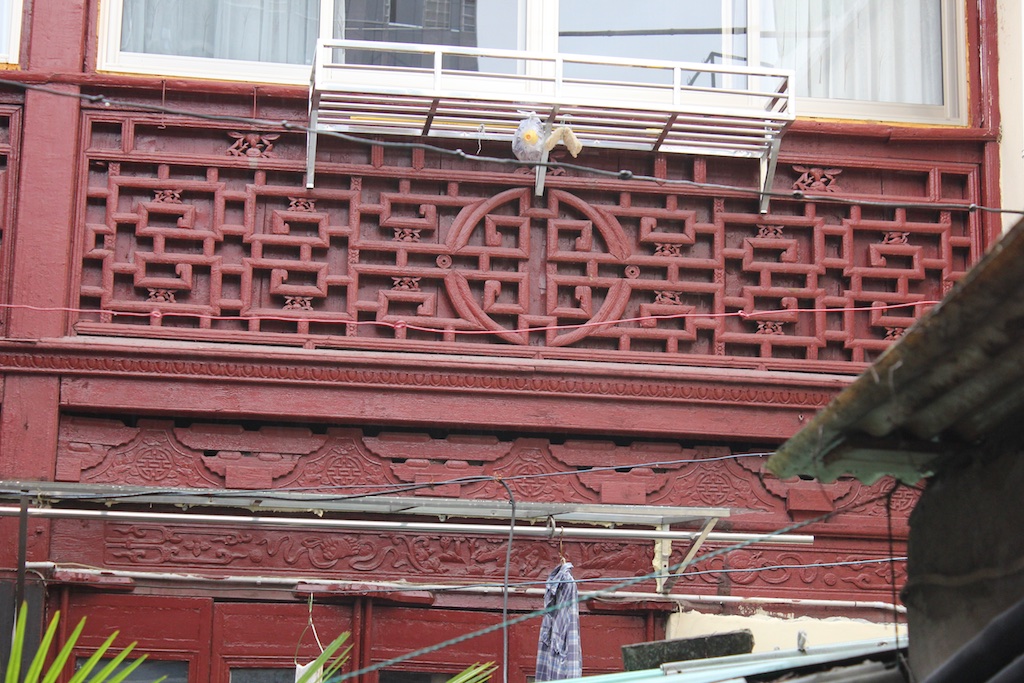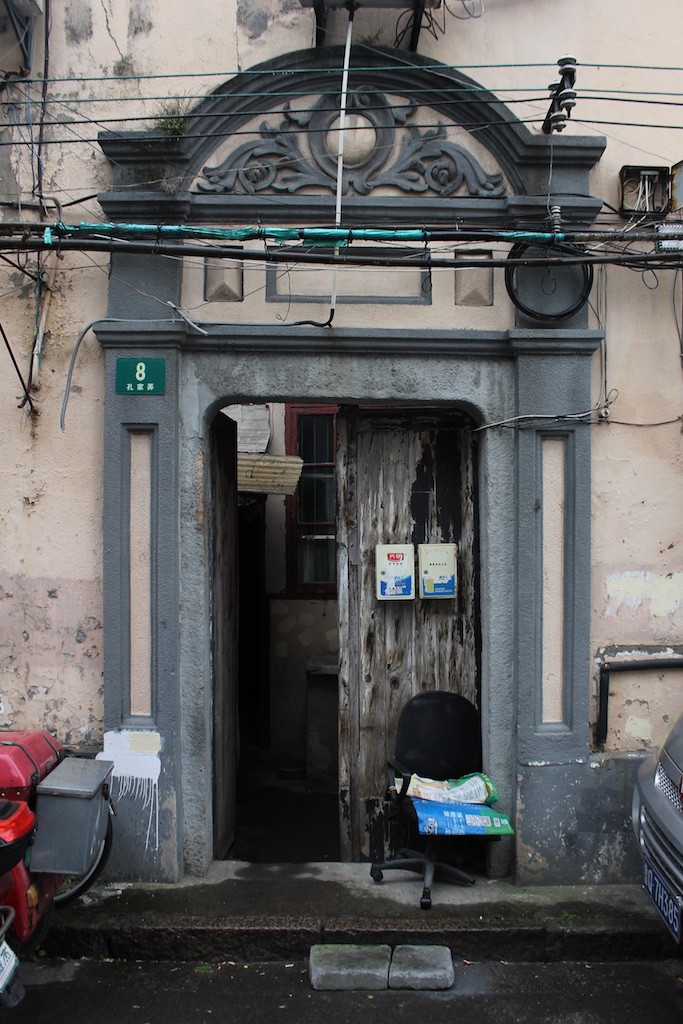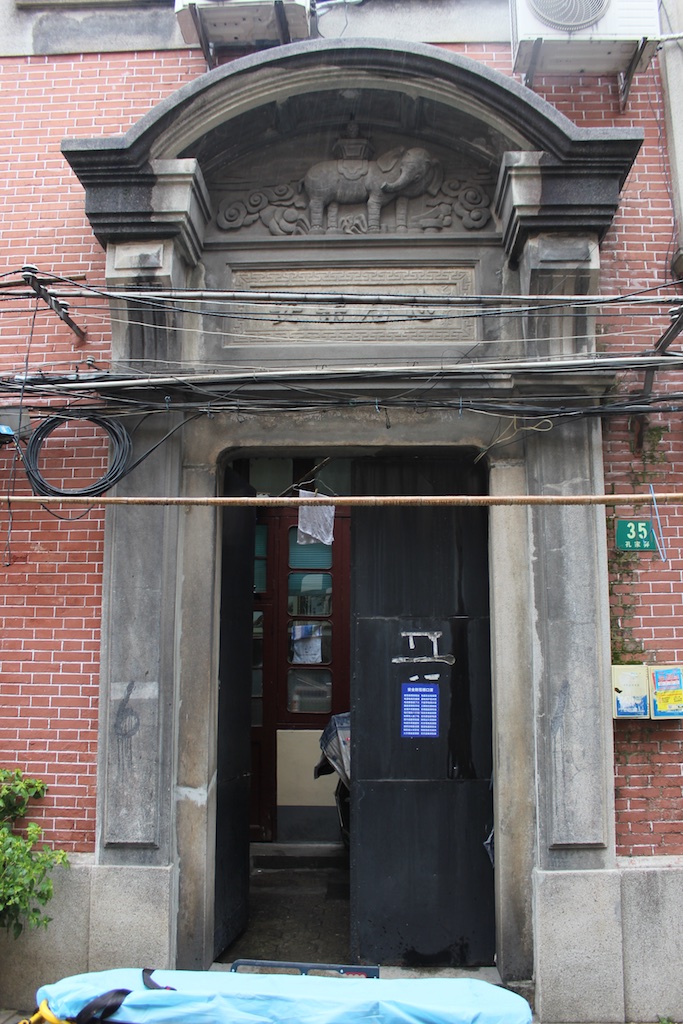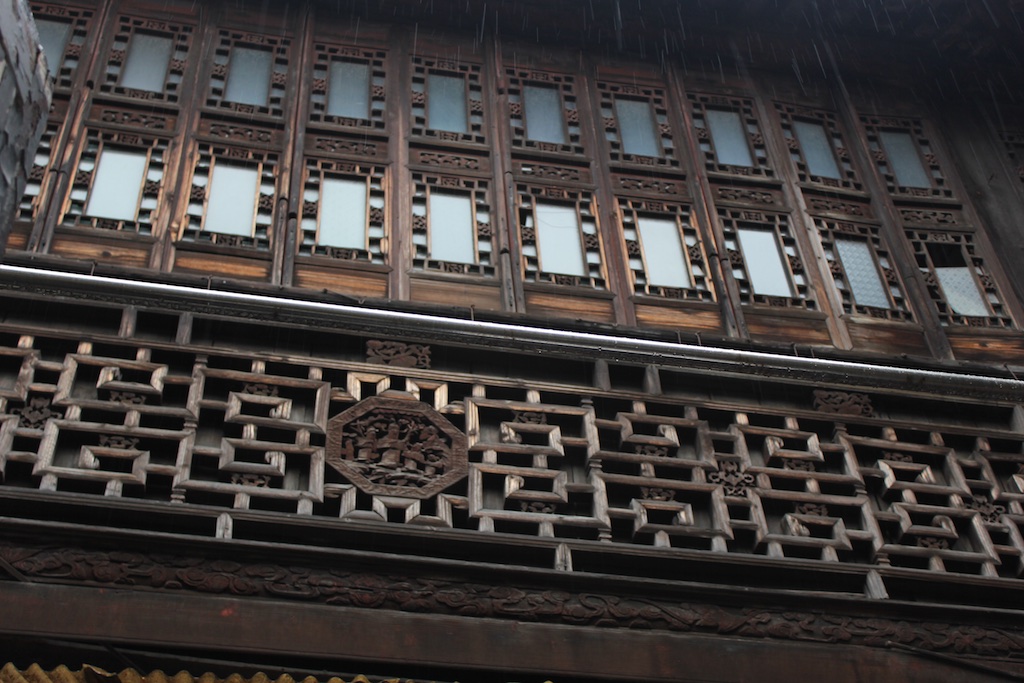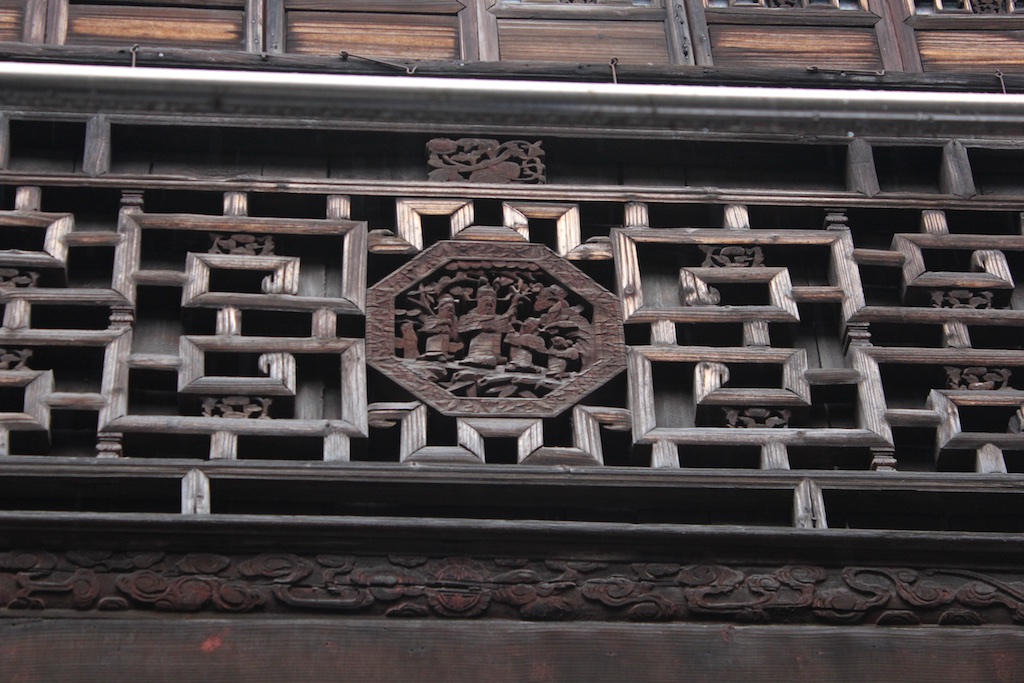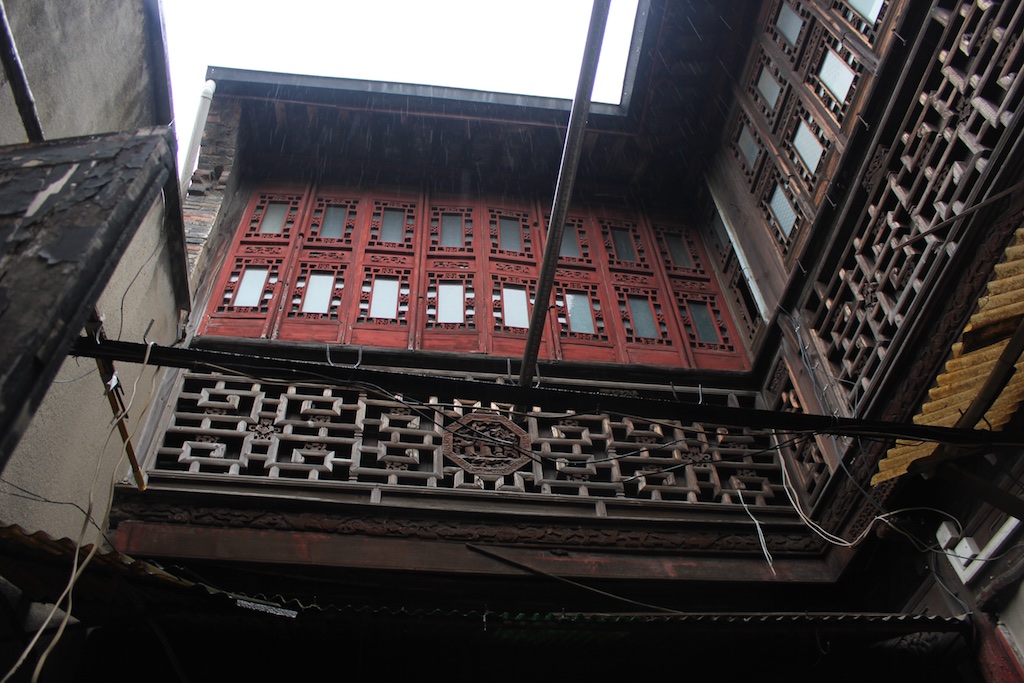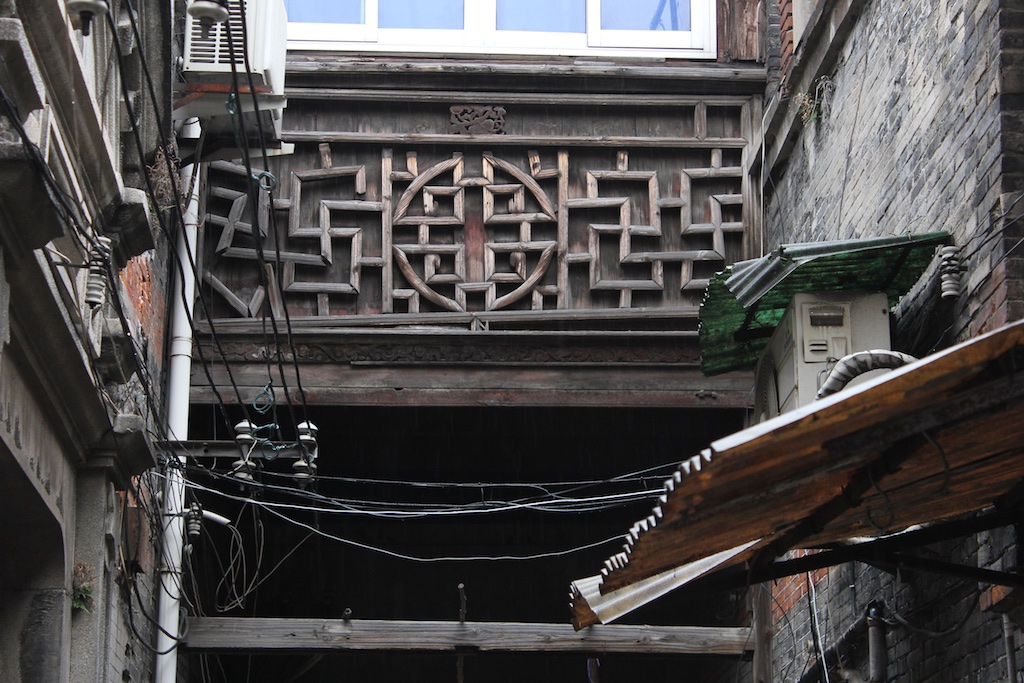The Lao Xi Men 老西门 or Old West Gate area of Shanghai is full of homes, temples, and treasures dating back to the Qing Dynasty if not earlier. Recently, Tina Kanagaratnam and Katya Knyazeva co-wrote an article on the demolition of this area for SupChina. Katya is a real expert in this part of town and its history. I've been on her tour which she runs for Shanghai Flaneur. It was a while ago, but I remember we visited several homes that dated back to the Qing Dynasty.
Since I'm on Christmas vacation now in Shanghai, between ferrying my daughters to their various appointments and engagements, I had a window of opportunity today to visit the area and see for myself what is going on there. I spent around two hours today plodding through the cold rain amongst a warren of alleyways and passages. I've been to this area before, many times over the past twenty years or so, but the impending destruction forced me to look at these alleys and homes with new eyes.
Sure enough, a big swath of land has been taken over by a construction site, just north of Fangbang Road. The first thing you notice (that is, if you can read Chinese) is the proliferation of propaganda posters, banners and other materials put up by the CCP with the key words hexie 和谐 and wenming 文明 or 'harmony and civilization.' These are particularly associated with the XJP government, yet I've seen these sorts of messages and banners for decades now.
Shao Qin, author of Shanghai Gone, relates in her book what has been happening to the residents of these old neighborhoods as they get demolished and turned into office parks, fancy apartments, and shopping malls.
Build a national civilized urban area, together build a harmonious and beautiful home!
This was formerly the westernmost part of the so-called Old Walled City, which dates back to the mid-1500s when merchants banded together to fund the building of the city walls during the Ming Dynasty. They did so because of predatory attacks by coastal pirates. Around 1912, those walls were knocked down to make way for modernity, but this part of the city still bears the name of the gate that once opened its doors to the hoi polloi in the surrounding bustling neighborhood outside the western wall.
No need for me to go into any more detail about the historic significance of this neighborhood--you can find plenty of info in Katya and Tina's article or in Katya's wonderful book on the Shanghai Old Town.
While touring the old neighborhoods, I did talk to several people who confirmed that these old alleyway homes are slated for imminent destruction. They just don't know exactly when that will happen. One woman told me she'd been living there for 60 years. This is a very typical Shanghai story. The only difference is that many of these old homes are older and more historical than most of the lilong neighborhoods that have been knocked down over the past two decades.
There are plenty of workers in orange moving around these areas, presumably preparing them for demolition...
To be sure, most of these are not very attractive properties. The alleys are crisscrossed with a cacophony of wires, and the people appear to be living in gentile poverty to say the least. But these are lively and very alive neighborhoods, full of small shops, some of which, like the butcher shops, look like they date back to the Late Qing period.
As I walked around, I looked for architectural features that seemed to be special or unique to the neighborhood. I found some courtyards with old trellises and windows and door arches decorated with figures that you don't see in other neighborhoods in town. There is a craftsmanship to these buildings and homes that is quite unique to the city. To see some of the hundreds of photos I shot, just click on the gallery below.
This wanton destruction of the old has been happening in China since the 1980s, if not earlier. While the Cultural Revolution may have purported to destroy the four olds, ironically a lot was preserved during the Mao years due to a combination of poverty and inertia. It was the onslaught of capitalism since the reform era started in the 1980s, and the influx of foreign capital from abroad, that led to this rampant destruction of the old ways, old buildings, and old neighborhoods in Shanghai and other cities, towns and villages in China.
Fortunately there are those who have struggled to preserve these old folkways, if not in reality then at least in photographs and other documentation. I'm thinking in particular of the work of Shanghai photographer Deke Erh and of his partner Tess Johnston, whose wonderful books of photographs and information on Old Shanghai and other places in China are simply irreplaceable. And then there's Katya's book, beautifully researched and written before this old town area got the axe.
While walking around the neighborhood of the Wen Miao, I just had to stop into Kong Yi Ji 孔乙己, a restaurant that serves Old Shanghai style food.
I don't have the expert eye of Katya and some others, and so I wasn't sure if some of the neighborhoods I saw dated from the Qing or Republican Era (mostly Republican I guess). There were a few alleys whose dates of origin were prominently displayed. One was from 1924, another from 1935. Hard to imagine the folks who occupied these buildings and neighborhoods dancing to the rhythms of the jazz age. They were most likely living in another era and another set of folkways more intimately connected to the heritage of the Jiangnan region from whence most of them came.
To be continued...






